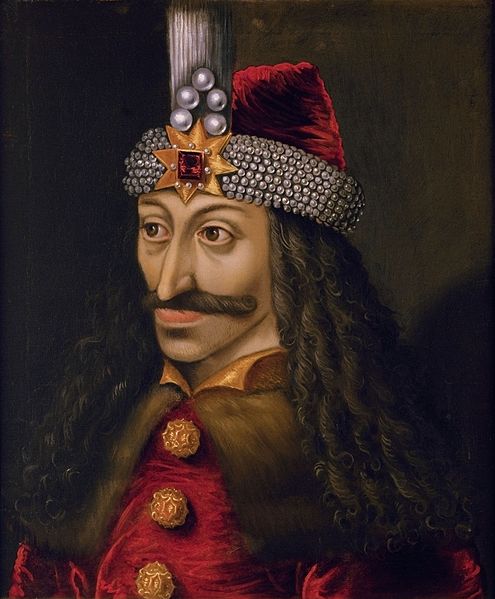The Real Dracula

Many know Dracula as the horrifying vampire from the 1897 novel Dracula, by Bram Stoker. But, few know the inspiration for this gruesome character came from Vlad III, the Prince and eventually King of Wallachia (an area in the Southern part of Transylvania) (Lallanilla, 2013). Vlad III’s history and legacy is gruesome, making him an obvious historical figure to base a blood sucking monster after. But what did he do to earn this legacy and where does the name Dracula come from?

Vlad III was born in 1431 in Wallachia. His hometown was located in a terrible place, between the lands of Christian Europe and the Muslim Ottomans, which made Wallachia a frequent battleground for the two religious powers who were fighting over ownership of the holy land. In 1442, Vlad II Dracul and his sons Vlad III and Radu went to what they thought was a diplomatic meeting with the Ottomans but was instead a trap (Lallanilla, 2013). They were all arrested and held hostage, only Vlad II was allowed to leave by promising loyalty to the Ottomans. They kept his two sons as a way to ensure this loyalty (Vlad, 2017). During his years of captivity, he was given schooling in science, the arts, philosophy, and trained to be a warrior. Although, he was not always treated so well, some say he may have been tortured and forced to witness the impalement of the enemies of the Ottoman empire (though there is no definitive proof that this happened). During his period of captivity, his father was murdered, and his older brother, Mircea, was tortured and buried alive. By the time he was released, around six years later, he was livid that he had been held captive for so long and his family had been murdered (Lallanilla, 2013) (his other brother Radu joined the Ottomans and converted to Islam during their captivity together (Polermo, 2014)).

Vlad III ascended the throne in 1448, was quickly deposed by his cousin Vladislav II, a couple months later, and then regained his thrown again in 1456. He kept his position until 1462 when he was imprisoned in Hungary. After he was released he again regained the throne, this time ruling from 1476 until the day he died fighting the Ottomans in 1477. His corpse supposedly was cut into pieces and sent to various places. The true area of his burial ground is unknown (Vlad, 2017).
The times when Vlad ruled for longer than a few months are when the bloodthirsty nature Stoker took inspiration from shined through. At that point he had already obtained his father’s religious surname Dracul from the Order of the Dragon (a religious military order which required members to fight against the enemies of Christianity, namely the Ottomans) (Order, 2017). In Slavic languages Dracul became Dracula, “the son of the Dragon” (Vlad, 2014). During his reign he developed a proclivity for impaling his victims on wood or metal poles from rectum or vagina to neck or mouth. He would then put them on display and let the victim slowly die, which could take hours or days. In 1462, “Vlad the Impaler” (as he sometimes was called) impaled around 20,000 men and put them on display around the capital of Wallachia as a way of repulsing and inflicting terror in his enemies (lallanilla, 2013). It was even said that he sometimes drank the blood of the impaled, dipped bread into their blood and ate it, or washed his hands in their blood before eating (Palermo, 2014). Whatever the case may be, Vlad the Impaler or Vlad III Dracula, is in my opinion, even more terrifying than the fictional character that his legacy eventually birthed.

Lallanilla, Marc. (2013). NBC News. Retrieved 27 October 2017, from https://www.nbcnews.com/science/vlad-impaler-real-dracula-was-absolutely-vicious-8C11505315
Order of the Dragon. (2017). En.wikipedia.org. Retrieved 27 October 2017, from https://en.wikipedia.org/wiki/Order_of_the_Dragon
Palermo, Elizabeth. (2014). Vlad the Impaler: The Real Dracula’s Dark Secrets. Live Science. Retrieved 27 October 2017, from https://www.livescience.com/g00/48536-vlad-the-impaler-dark-secrets.html?i10c.referrer=https%3A%2F%2Fwww.livescience.com%2Fg00%2F48536-vlad-the-impaler-dark-secrets.html%3Fi10c.referrer%3Dhttps%253A%252F%252Fwww.google.com%252F
Vlad the Impaler. (2017). En.wikipedia.org. Retrieved 27 October 2017, from https://en.wikipedia.org/wiki/Vlad_the_Impaler







